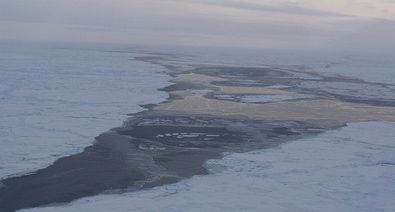New research measures pinpoints localized sources of heat-trapping greenhouse gas emissions

Cracks in the Arctic sea ice may be increasing the venting of methane from the Arctic Ocean. PHOTO COURTESY NOAA.
By Summit Voice
SUMMIT COUNTY â€" Along with decreasing the albedo of the Arctic, melting sea ice may also be resulting in more heat-trapping methane being released to the atmosphere, according to a new study published in Nature Geoscience.
Researchers said they measured increased levels of methane where the Arctic’s floating sea ice fractures to reveal open water. Although the amount is small compared to emissions from human sources, it was more than previous estimates for methane emissions from marine sources.
The methane may be coming from tiny bacteria and other organisms in the seawater, which release methane as a waste product, but this has not yet been demonstrated definitively.
“And there is the potential for feedbacks,†said James Elkins, Ph.D., a researcher with NOAA’s Earth Systems Research Laboratory. “We know that Arctic sea ice is disappearing, and with warmer water, more sunlight, more breakup of the ice … we could see enhancement of the biological activity that creates methane.â€
Most atmospheric methane from human emissions stems from natural gas development, livestock operations, and landfills.
The new paper came from a multi-agency mission that probed Earth’s atmosphere, from pole to pole and surface to stratosphere, in a research airplane outfitted with atmospheric chemistry instruments.
The Nature Geoscience study also presents initial evidence that shallow water geological deposits, known as methane hydrates, are not currently sending substantial amounts of methane into the atmosphere. “We found no evidence of methane from hydrates,†Elkins explained.
Some scientists are concerned that the release of methane from hydrates and thawing permafrost could become self-reinforcing cycles in Arctic climate. More methane release could warm the region, creating more potential methane release, and more warming.
This study suggests that scientists interested in understanding global cycles of the potent greenhouse gas need to consider ocean surface sources more carefully, especially in the Arctic.
39.586656 -106.092081
Filed under: climate and weather, Environment, global warming Tagged: | Arctic Ocean, climate, global warming, greenhouse gases, methane
No comments:
Post a Comment